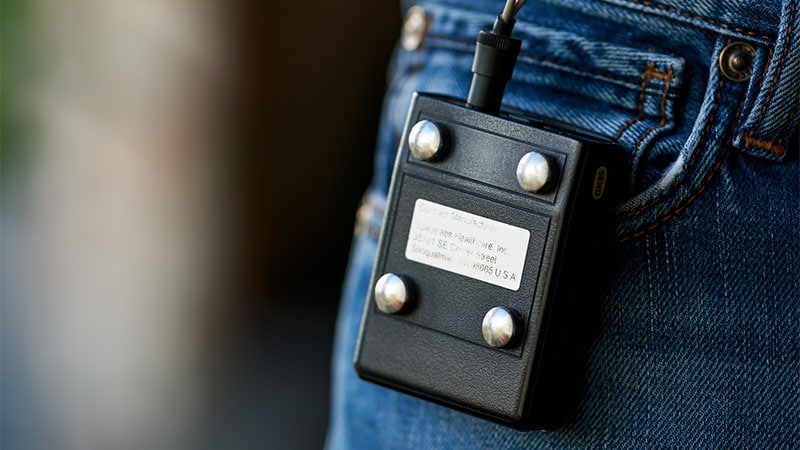Prevalence of NSVT in HCM Patients with Extended ECG Monitoring
Core Concepts
NSVT prevalence in HCM patients is higher than previously believed, impacting risk stratification and potential treatment decisions.
Abstract
In a study presented by Juan Caro Codón, MD, at the 2023 European Heart Rhythm Association congress, the prevalence of nonsustained ventricular tachycardia (NSVT) in patients with hypertrophic cardiomyopathy (HCM) was found to be significantly higher than commonly assumed. Extended 30-day electrocardiographic (ECG) monitoring revealed a much higher incidence of NSVT compared to traditional 24-hour monitoring, challenging current risk stratification practices. The study suggests that NSVT is more prevalent in HCM patients than previously thought, emphasizing the need for further research and potentially impacting decisions regarding implantable cardioverter-defibrillator (ICD) placement. The findings underscore the clinical relevance of NSVT in HCM patients, linking it to significant clinical outcomes such as stroke, thromboembolism, and sudden cardiac death.
Key Highlights:
NSVT prevalence in HCM patients is much higher during extended 30-day ECG monitoring compared to traditional 24-hour monitoring.
Extended monitoring revealed a 62% prevalence of NSVT, significantly higher than the 8% prevalence observed in conventional monitoring.
NSVT is associated with clinically meaningful endpoints like stroke and sudden cardiac death, necessitating further research and potential changes in risk stratification.
Extended monitoring may lead to reclassification of patients into higher-risk groups, impacting decisions on ICD implantation.
The study highlights the importance of prolonged monitoring in detecting arrhythmias and assessing the risk of sudden cardiac death in HCM patients.
Surprisingly More NSVT Using Extended ECG Monitoring in HCM
Stats
"In the registry study, such arrythmias were observed in about six times as many HCM patients during 30 days of ambulatory electrocardiographic (ECG) monitoring as would have been identified based on the first 24 hours of the monitoring period: 65% vs 11% of the cohort."
"Also, about 62% of the patients showed NSVT at 'extended' 30-day monitoring, compared with an 8% prevalence of the arrhythmia based on the more conventional ECG monitoring period of 24 hours."
"The primary endpoint of clinically relevant arrhythmia (AF, atrial flutter, or NSVT) was identified during the first 24 hours of monitoring in 11% of patients. The prevalence rose to 65% (P < .001) based on 30-day monitoring."
Quotes
"Nonsustained ventricular tachycardia, an important arrhythmia used every day in clinical practice to make decisions, is 'much, much more prevalent than we thought' in patients with HCM." - Juan Caro Codón, MD
"Therefore, your data really are a call for more data on screening for AF in hypertrophic cardiomyopathy patients." - Isabelle van Gelder, MD, PhD
Key Insights Distilled From
by Daniel M. Ke... at www.medscape.com 05-09-2023
https://www.medscape.com/viewarticle/991752
Deeper Inquiries
What are the implications of the higher prevalence of NSVT in HCM patients for current risk stratification practices and treatment decisions?
The higher prevalence of nonsustained ventricular tachycardia (NSVT) in hypertrophic cardiomyopathy (HCM) patients has significant implications for current risk stratification practices and treatment decisions. Firstly, it challenges the existing beliefs about the prevalence of NSVT in HCM patients, indicating that it is much more common than previously thought. This suggests that current risk stratification practices may underestimate the true risk of arrhythmias in these patients, potentially leading to underestimation of the risk for sudden cardiac death. As NSVT is a clinically important arrhythmia used in daily practice to make decisions, its higher prevalence necessitates a reevaluation of risk assessment strategies in HCM patients. Treatment decisions, especially regarding the use of implantable cardioverter-defibrillators (ICDs), may need to be reconsidered based on the increased prevalence of NSVT, as these devices are often recommended for patients at high risk of sudden cardiac death.
How might the findings of this study impact the guidelines for implantable cardioverter-defibrillator (ICD) placement in HCM patients?
The findings of this study could have a significant impact on the guidelines for implantable cardioverter-defibrillator (ICD) placement in hypertrophic cardiomyopathy (HCM) patients. With the higher prevalence of nonsustained ventricular tachycardia (NSVT) observed in HCM patients using extended ECG monitoring, there is a need to reassess the criteria for ICD placement in this population. The study suggests that a substantial number of patients who would not have met the traditional criteria for ICD implantation based on shorter monitoring periods may actually be at a higher risk of sudden cardiac death due to the presence of NSVT. Therefore, the guidelines may need to be updated to consider the use of extended ECG monitoring to identify high-risk patients who could benefit from ICD placement, even if they do not exhibit symptoms or meet the current criteria based on shorter monitoring periods.
How can the use of extended ECG monitoring in HCM patients be optimized to improve outcomes and patient care?
To optimize the use of extended electrocardiographic (ECG) monitoring in hypertrophic cardiomyopathy (HCM) patients and improve outcomes and patient care, several strategies can be implemented. Firstly, incorporating extended monitoring as a routine part of the assessment for HCM patients can help in identifying clinically important arrhythmias such as nonsustained ventricular tachycardia (NSVT) that may not be captured during shorter monitoring periods. This can lead to more accurate risk stratification and treatment decisions, including the appropriate use of implantable cardioverter-defibrillators (ICDs) in high-risk patients. Additionally, healthcare providers should be educated on the significance of extended ECG monitoring in HCM patients and the potential benefits it offers in terms of detecting arrhythmias and improving patient outcomes. Furthermore, ongoing research into the optimal duration and frequency of extended monitoring in HCM patients can help refine guidelines and protocols for its use, ultimately enhancing patient care and reducing the risk of adverse cardiac events.
0
More on Cardiology
Cardiac Amyloidosis: A Potentially Underdiagnosed Cause of Heart Failure
Navigating the Evolving Landscape of Durable Mechanical Circulatory Support: Insights on Patient Selection, Outcomes, and Future Advancements
Colchicine's Potential in Reducing Cardiovascular Risks: Emerging Evidence and Clinical Implications
